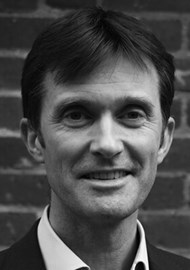Prof Dikkers shares the details of his journey into ENT surgery, his dedication to treating laryngeal papillomatosis, and his pioneering advancements in button battery safety.
Recurrent respiratory papillomatosis (RRP) is one of the most frustrating conditions managed by laryngologists. There are few people in the world who have had a more profound impact on its treatment than Professor Frederik Dikkers. We caught up with him at the ELS Congress in Milan in June 2023, and then again for a Zoom chat in February this year. He tells us about his career, his hobbies and his ardent work on making ‘safe’ batteries.

Prof Frederik Dikkers.
Tell us about your pathway into ENT surgery.
Back in 1984, I was a young resident. I decided on ENT because a friend of my older brother was an ENT surgeon and I had to do a scientific part of my studies; I found the aspects on voice very interesting and had many questions. I wrote a paper at that time, and this later became the start of a PhD on benign lesions on the vocal folds.
You developed a particular interest in laryngeal papillomatosis. How did that happen?
I met a six-month-old boy with papilloma. He was born in 1988, and I can still remember his birthday – it’s not a good sign when you can remember the date of birth of one of your patients! I have been following him up all the rest of my life and, when I retired a few months ago, he came to my farewell party. He is now 36 years old – I have operated on him more than 100 times. He is my personal motivation to do something on RRP.
Tell us about the history of management of RRP
The first paper was 100 years ago – in 1923. When I started my residency, we used cold instruments, and the microscopes were not so good. In our university, we had the first laser in western Europe, so we started using the laser as well. We thought this would be helpful for everyone. In the end, we used it in 90% of cases. Over time, other instruments were developed like the microdebrider, coblation and other lasers; the CO2 laser has reduced in its usefulness, but recent developments, including the acu-spot on the CO2 laser, have helped. I don’t think you need one surgical instrument – you need to use what is good in your hands, and what facilities you have. If you are in Lagos, Nigeria, you may not have a laser, so you will be using cold instruments! We, as western rich countries, should not be dictating what instruments should be used, but we can help in promoting the optimal treatment.

The team of inventors of the Fused Button Battery in Brussels, December 2023, minutes after
having been presented with the Gold Medal in Consumer Safety Products by the EU.
(L-R): Prof Marnix Wagemakers, Frans Ooms, Prof Frederik Dikkers and Prof Tjark Ebels.
How have things changed in the last 10 years?
The use of a vaccine as an adjuvant therapeutic tool has been very helpful. The problem is that conceptually, it really shouldn’t work but in meta-analyses, it does appear to work, so the conclusion of two studies is that the use of vaccines should be endorsed. In the last few months, a novel immunotherapeutic agent has been developed in Philadelphia; this has passed a phase two study in the US. This has had very promising results, and the researchers are looking to do phase three studies in the US and Europe. Another approach in Bethesda uses DNA techniques – this also appears to be very effective.
How do you see things changing?
Hopefully, we will change papillomatosis from a surgical disease into a medical disease. At a meeting in Boston in early 2023, other medications were proposed. Prevention is the most important aspect but there are two problems: firstly, there is only one factory making the vaccine – in two brands – the four-valent and nine-valent vaccine. The richer countries are using the latter. But in my country (the Netherlands) we are still using the bi-valent vaccine, covering only HPV 16 and 18, so it won’t cover the types 6 and 11 that cause laryngeal papillomatosis. My country is rather frugal!

Fred driving a par 3 in Torrey Pines Golf Course, La Jolla, CA.

Prof Tjark Ebels (jib) and Prof Frederik Dikkers (helm) during a race on a lake in
Friesland, the Netherlands, in Prof Dikkers’ 163-year-old sailboat.
You have recently retired from clinical practice – what are your plans?
I am guiding some PhD students, including some work on the trachea and its embryology. In addition, I am working a lot on button batteries. In June 2023, we organised a meeting to discuss this topic. I have been working with a cardiothoracic surgeon from Groningen University, and two technicians from Delft, to develop a ‘safe’ button battery. We all know that ingested button batteries can cause huge morbidity and mortality; our suggested design has a fuse, so the moment you swallow it, it is drenched in saliva and the current causes the fuse to burn out. We are now trying to industrialise this – we are working with major battery companies to get this to market. We are also working on legislation – we have written to the European Commission. An initial meeting between the US button taskforce and the European group is now moving towards a global taskforce. I have been on both groups, so I have been active in trying to merge the two.
"I don’t think you need one surgical instrument – you need to use what is good in your hands, and what facilities you have"
We are working with several companies on this – but we don’t want to sell it to just one company as that would give them a big advantage. Financing for this research is coming from a number of different sources.
What other plans do you have?
It’s very clichéd, but I’m trying (unsuccessfully) to improve my golf handicap. I also love to sail - we have had the boat in the family over 100 years! In addition, our daughter’s family has moved close to us recently to be near the four grandparents. We have two grandchildren, and we take care of them one day a week. I’m also trying to get my mind around how to improve laryngology as a whole. One of the main improvements has been in imaging – when I started, we had people gagging as we used mirrors to examine them. That has now gone. Fibre-optics improved things, but they tended to break. Now we have excellent endoscopes with high-definition images, and narrow-band imaging. The companies are competing with each other in this area. We have also seen an increased use of lasers, and more are coming through. And we have seen improvements in anaesthesia – when I started, we just had the mask, and now we have IV anaesthesia, and tubeless anaesthesia, which is fantastic. We have transnasal endoscopy with a working channel where we can do lots of things endoscopically – this is great. Our advances in treatment of stenosis are moving on quickly. There is a great future in laryngology!
Finally, you were nominated for a Rare Angel award – tell us about that.
I’m very proud! This award is given by the Dutch Society of Rare and Genetic Diseases. It’s given once a year and recipients can be nominated by either clinicians or by patients. In fact, I was nominated by both, which is wonderful!
Fred, it has been lovely to chat to you – I hope you have time to get your golf handicap down.
You are very welcome – it has been a pleasure.










